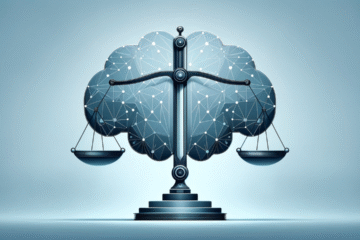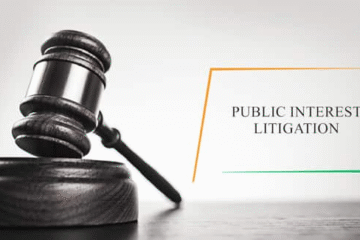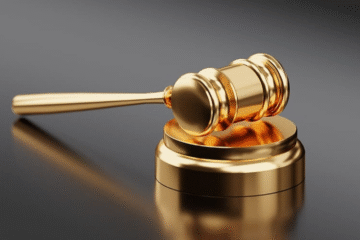
This article is written by Saloni of 7thsemester of BBALL.B.of Bhagat Phool Singh Mahila Vishwavidyalaya, Department of laws Khanpur Kalan (sonipat), an intern under Legal Vidhiya
ABSTRACT
The notion of Separation of Powers highlights how the three branches of government—legislature, executive branch, and judiciary—are mutually exclusive. The core concept of separation of powers is that the roles performed by the various branches of government are independent of one another and do not overlap. This concept ensures that power does not amalgamate. The Framers of the Constitution created this structure to prevent any one branch from gaining undue authority. In this article we will discuss the concept of separation of power given under the constitution of India.
Keywords: separation of power, division of power among different organs of government, Montesquieu theory of separation of power, constitutional provisions
INTRODUCTION
As we all know that the power is divided among the three organs of the government namely legislative, executive and judiciary in a state, there are three branches of government operating simultaneously:
- Legislative
- Executive and
- Judiciary
The theory of separation of powers postulates that these three powers of the government must be kept separate and be exercised by separate organs of the government in a free democracy. Accordingly, the legislature cannot exercise executive or judicial powers, the executive cannot exercise legislative or judicial powers and the judiciary cannot exercise legislative or executive powers of the government.
DEFINITION OF SEPARATION OF POWERS
According to wade and Phillips, separation of powers may mean three different things
- That no individual should serve in more than one capacity in any of the three branches of government
- That one organ of the government should not control or interfere with the exercise of function by another organ
- The idea that no government agency should perform the duties of another
HISTORY OF SEPARATION OF POWERS
The doctrine of separation of powers has ancient origin. The origin of this doctrine can be traced in the period of Aristotle. A French philosopher John Bodin and british politician Locke had expounded this doctrine. But it is Montesquieu who was for the first time gave it a systematic and scientific formulation in his book ‘Esprit des lois’ (the spirit of laws) which was published in the year 1748.
MONTESQUIEU’S THEORY
As per this theory there are three kinds of powers i.e., legislative, executive and judicial and each power should be vested in a separate and distinct organ and any of these powers should not be vested in the same organ or individual. If all the powers unite in the same organ then there is an apprehension that the organ concerned may enact tyrannical laws and execute them in a tyrannical manner. There would be end of everything if the same man or the same body were to exercise those three powers that of enacting law, executing the public resolutions and of trying the causes of individuals.
EFFECTS OF THE THEORY
- The theory of separation of powers as propounded by Montesquieu had tremendous impact on the growth of administrative law and functioning of governments.
- English and American jurists as well as politicians were attracted by this doctrine.
- This doctrine has influenced the constitution makers. As a result, the French Constituent Assembly declared in 1789 that the country would not have a constitution if the idea of the division of powers was rejected.
- In America, the foundation of the entire constitution is this theory. It had a significant impact on the thinking of those who framed the US Constitution.
CRITICISM
The doctrine of separation of power sounds good. However, in practice there are many defects when it was sought to be applied in real life situations. The defects which were found in this doctrine are mainly:
- Historical inaptness: historically speaking the theory seems to be incorrect. The British constitution serves as the foundation for his explanation of this idea. The English constitution actually did not have a separation of powers. The British Constitution never accepted this notion.
- Division of functions: the assumption behind this doctrine is that the three functions of the government are divisible from each other. However, it is not so in reality. There are no watertight compartments. There is overlapping with each other.
- Adherence to it not possible in a welfare state: the modernstate is a welfare state and it has to solve many complex socio-politico- economic problems of a country. In this situation it is not possible to stick to this doctrine.
- Organic separation: in modern practice the theory separation of powers means an organic separation and the distinction must be drawn between ‘essential’ and ‘incidental’ powers and that one organ of government cannot encroach upon the essential functions belonging to another organ, but may exercise some incidental functions thereof.
- Practical difficulties: it is difficult to take certain actions if this doctrine is accepted in its entirety. In practice it has not been found possible to concentrate power of one kind in one organ only. The legislative branch of government oversees the executive branch in addition to being the body that enacts laws; the administrative branch also performs legislative functions. In addition to its judicial duties, the court also has limited rule-making authority.
PRACTICAL APPLICATION OF DOCTRINE OF SEPARATION OF POWER IN DIFFERENT COUNTRIES
In USA
In America, the doctrine of separation of powers forms the foundation. A system of “checks and balances” is established by the US Constitution. In America the doctrine of separation of powers is that no one organ of the government can encroach upon the power of the other.
IN ENGLAND
In reality the theory of integration of powers has been adopted in England. It is true that the three powers are vested in the three organs and each has its own peculiar features but it cannot be said that there is no sharing out’ of the powers of government.
POSITION IN INDIA
Separation of power in India
- Legislative power —-Lok sabha, Rajya sabha and state legislatures
- Executive power—–president
- Judicial function—-supreme court, high courts and subordinate courts
Constitutional provisions related to separation of power
- Article 50: it states that state shall take steps to separate judiciary from executive
- Article 121 and 211: it states that the judicial conduct of a judge of the Supreme Court and high court cannot be discussed in the parliament.
- Article 122 and 212: the validity of proceedings in parliament and the legislatures cannot be called into question in any court.
- Article 361: the president or governor shall not be answerable to any court for the exercise and performance of the past
- Constitutional conspectus: The concept of separation of powers is not recognized by the Indian constitution. Apart from the directive principles laid down in article 50 which enjoins separation of judiciary from the executive, the constitutional scheme does not embody and formalistic division of powers.
- Parliamentary executive: Despite the president having the exclusive authority to act as the union’s executive, the constitution provides for a parliamentary executive. Under the constitution, provisions have been made for council of ministers with the prime minister at the head to aid and advise the president in the exercise of his functions. Consequently, the president does not lead the executive. The idea of separation of powers is only sound inasmuch as it prohibits one branch of government from taking over the primary duties of another. This was held by the supreme court of India in the case of Ram Jawaya v. State of Punjab (1955)
- Functional overlapping:after the careful reading of the constitutional provisions, it is clear that the doctrine of separation of powers has not been accepted in india as well as functional overlap in the formal sense.
- Constitutional recognition: in the case of Indira Nehru Gandhi v. Raj Narain, Ray CJ has observed division between three main powers of the government. The powers are vested in the executive, legislature and judiciary in their respective sphere.
- Constituent power:under the Indian jurisprudence the source of the doctrine of the separation of powers is constituent power which is an amalgam of all the powers. the constituent power is sovereign. It creates the organs and distributes the powers.
- System of checks and balances:in case of Indira Gandhi v. Raj Narain, Chandrachud J. also remarks that political usefulness, of the doctrine of separation of power is now widely recognized. No constitution can stand if its complex system of checks and balances is not devotedly adhered to.
- Separation of powers as basic features:in Indira Gandhi v. raj Narain it was observed that separation of powers is a feature of the basic structure of the constitution. The roles allotted to the three distinct democratic organs cannot be assumed by any one of them.
CASE LAWS
In Re Delhi laws act case The Supreme Court ruled that India upholds the idea that no organ should carry out a duty that fundamentally belongs to another, with the exception of situations in which the constitution grants a body vested with power.The court determined that, although not explicitly stated in our constitution, the concept of separation of powers is clearly demonstrated by the constitution’s own provisions in certain situations.
IC Golaknath v. state of Punjab, in this case the court observed thatThe Union territory, the Union, and the State are the three different constitutional entities, in the same way it has three main branches i.e., legislative, executive and the judiciary. It specifies the exact bounds of their power and mandates that they perform their responsibilities without interfering with those of others. They have to work within their limitations.
In land mark case of Keshvananda Bharti vs. Union of India, the court observed that amending power is the basic feature of the constitution. Any changes to the basic structure of the constitution are prohibited and would be considered unconstitutional. Beg J observed that the separation of powers is that part of basic structure of the constitution.
In Asif Hameed v. State of Jammu and Kashmir, the court held that although the concept of separation of powers is not recognized by the constitution in its entirety, the Supreme Court noted that it does clearly identify the roles and authority of each organ.
In case of Indira Gandhi v. raj Narain, Chandrachud J. also remarks that political usefulness, of the doctrine of separation of power is now widely recognized. No constitution can stand without a conscious effort to maintain its complex system of checks and balances.
ADVANTAGE AND DISADVANTAGES OF THE DOCTRINE OF SEPARATION OF POWER
Advantages
- It ensures that all the organ of the government function independently in their respective field.
- The decree of correctness increases since the matter is handled by the experts
- The efficiency of the work increases in the branches of the government.
- Division of work and skills
Disadvantages
- The practical application of the doctrine of separation of power is very problematic
- It is not possible to draw a thin line difference between the functions of the three branches of government
- There can be possibility of delay in the process because the actions of the branches can become arbitrary.
CONCLUSION
Hence in nutshell it can be concluded that the separation of powers under the Indian constitution is an essential feature of the Indian democracy. It ensures that no single branches become too powerful and each of the organs can function to keep check and balance over the other organ. This doctrine protects the people from tyranny and arbitrariness. The system of check and balances helps in protecting the rights and freedom of people.
REFERENCES
[1].Admin & Admin. (2016) Administrative Law: Separation of powers | RACOLB LEGAL. https://racolblegal.com/administrative-law-with-special-reference-to-doctrine-of-separation-of-powers/
[2]. Practice. (n.d.). https://www.drishtiias.com/mains-practice-question/question-673/pnt
[3]. (Rai Sahib Ram Jawaya Kapur Vs State of Punjab, 1955)https://www.lawinsider.in/judgment/rai-sahib-ram-jawaya-kapur-vs-state-of-punjab
[4]. (Indira Gandhi vs Raj Narain, 1975) LawBhoomi. (2023b). Indira Gandhi vs Raj Narain. LawBhoomi. https://lawbhoomi.com/indira-gandhi-vs-raj-narain/
[5]. (Indira Gandhi vs Raj Narain, 1975) LawBhoomi. (2023b). Indira Gandhi vs Raj Narain. LawBhoomi. https://lawbhoomi.com/indira-gandhi-vs-raj-narain/
[6]. (In Re The Delhi Laws Act, 1912,The … vs The Part C States (Laws) Act,, 1951)https://fitinlaw.wordpress.com/2021/06/17/in-re-the-delhi-laws-act-1912-air-1951-sc-332-case-summary/
[7]. (I. C. Golaknath & Ors vs State Of Punjab & Anrs, 1967 )https://lawfoyer.in/golaknath-state-of-punjab/
[8]. (Kesavananda Bharati … vs State Of Kerala And Anr, 1973) https://thelawtree.akmllp.com/insights/kesavananda-bharati-v-union-of-india-a-case-that-india-cannot-forget/
[9] (Asif Hameed & Ors. Etc. Etc vs State Of Jammu & Kashmir & Ors, 1989) https://indiankanoon.org/doc/1225520/#:~:text=In%20that%20case%20the%20High,be%20free%20from%20executive%20influence.




0 Comments